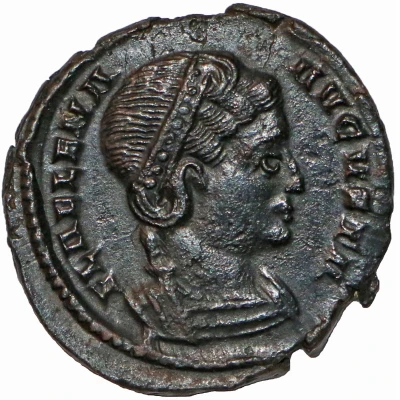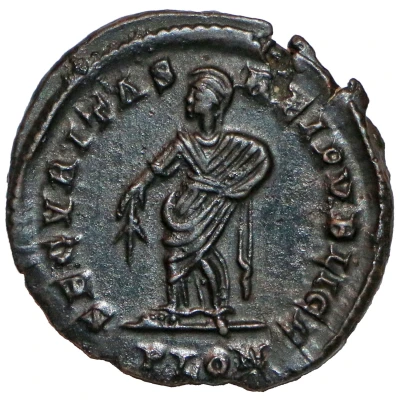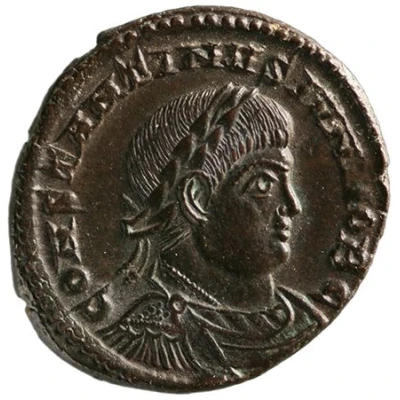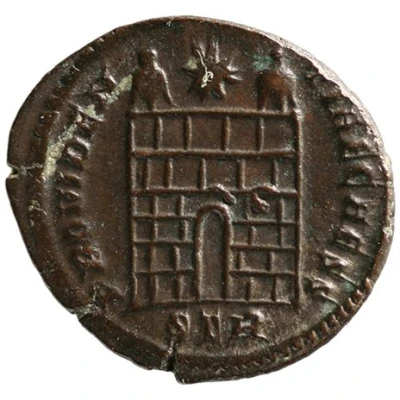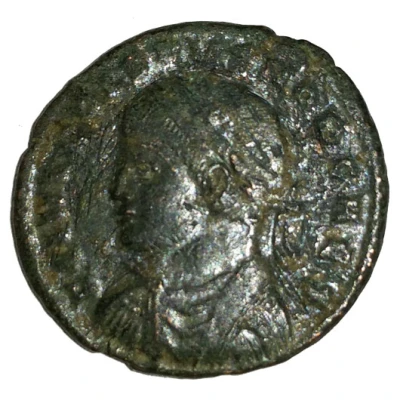


© pejounet (CC BY-NC-SA)
Nummus - Crispus PROVIDENTIAE CAESS; Treveri
| Bronze | 3 g | 18 mm |
| Issuer | Rome › Roman Empire (27 BC - 395 AD) |
|---|---|
| Emperor | Constantine I (Flavius Valerius Constantinus) (306-337) |
| Type | Standard circulation coin |
| Years | 324-325 |
| Value | Nummus (1⁄7200) |
| Currency | Solidus, Reform of Constantine (AD 310/324 – 395) |
| Composition | Bronze |
| Weight | 3 g |
| Diameter | 18 mm |
| Thickness | 1 mm |
| Shape | Round (irregular) |
| Technique | Hammered |
| Orientation | Medal alignment ↑↑ |
| Demonetized | Yes |
| Updated | 2024-10-05 |
| Numista | N#103187 |
|---|---|
| Rarity index | 86% |
Reverse
Camp gate with six layers and no doors, with star above in between two turrets.
Script: Latin
Lettering:
PROVIDENTIAE CAESS
STR
Translation: The Foresight of the Two Caesar
Edge
Plain
Comment
Reverse lettering referring to both Caesars would refer to both Crispus and his father Constantine I.Crispus was the logical choice to inheritate the Throne after Constantine I would pass away; his siblings being too young at the time. However it never happened. His step-mother Fausta convinced Constantine I that Crispus was in love with her and tried to rape her. Constantine I ordered his son to be tried and Crispus was executed short after in 326. Constantine I later discovered he had been setup by Fausta and had her executed by suffocation in an over-heated bath. He also passed a damnatio memoriae order, so Fausta's fate would not be mentioned nor remembered in history.
Appears to be AE3 between 17mm and 21mm of diameter.
Interesting fact
One interesting fact about the Nummus - Crispus coin is that it features the image of the Roman goddess Providentia on one side, which symbolizes the idea of foresight and planning for the future. This was a significant theme during the reign of Emperor Crispus, who was known for his military campaigns and administrative reforms. The coin's design serves as a reflection of the values and ideals of the Roman Empire during that time period.
